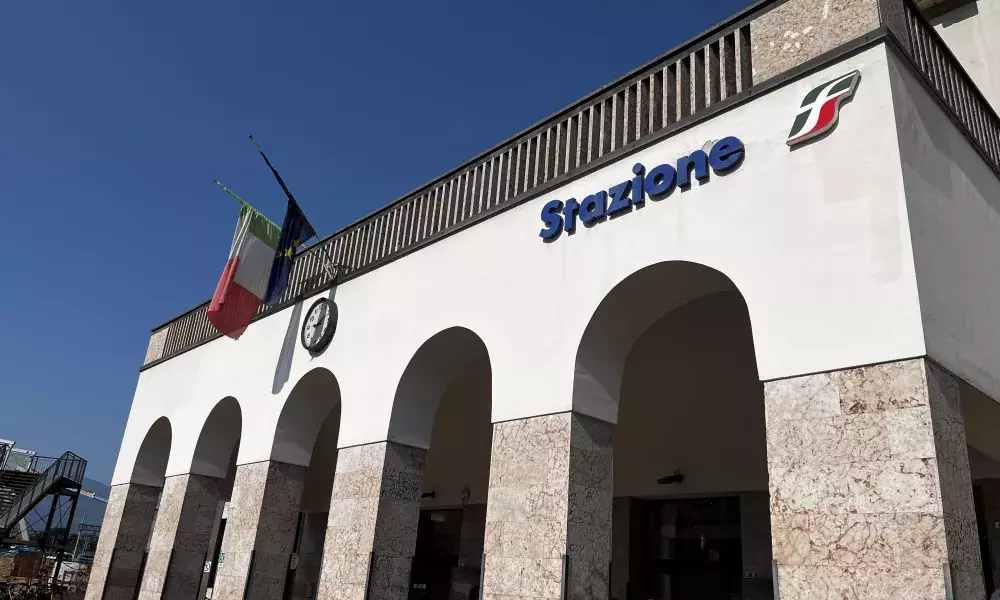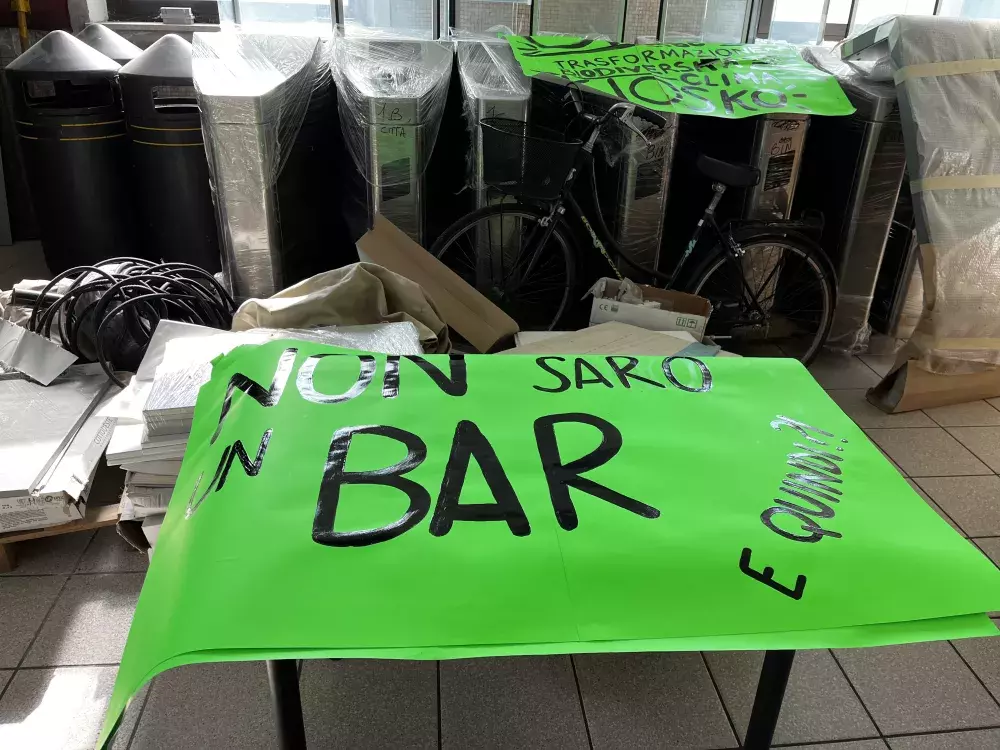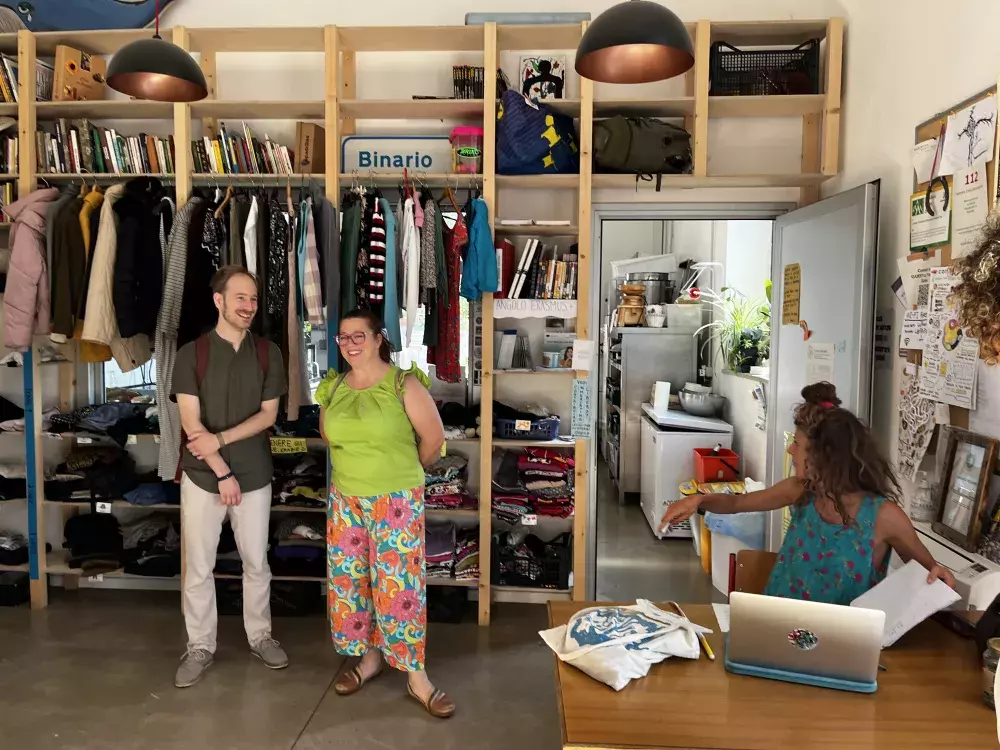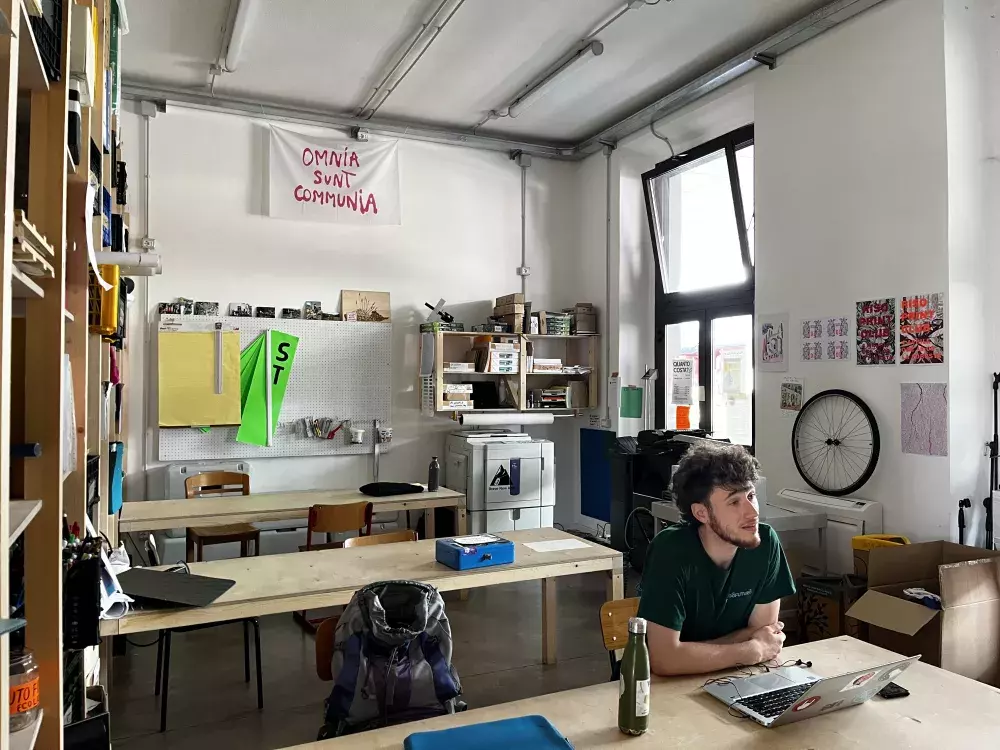Transforming a station: how Rovereto is reusing abandoned spaces for sustainability

At 8 a.m. on any given morning at the train station of Rovereto, it’s easy to observe a constant flow of passengers. High school students arriving from nearby towns, commuters heading to work, and tourists coming from Germany or other parts of Italy to visit Lake Garda or attend one of the many cultural festivals in the city.
This small but international railway station has been a transit point between Italy and Austria for more than a century. Its history is reflected in the different sections of the building, with its original nucleus built at the end of the 1800s by the Imperial Royal Austrian State Railways.
Although a standardized design for stations had not yet been adopted in the Austrian Empire, the railway station of Rovereto was one of the first examples of multifunctional building. The main structure housed a concourse and the ticket office on the ground floor, while the upper floor contained small apartments for railway workers and the station manager.
Subsequent renovations, including the renovation of the facade in a rationalist style during the fascist era and the reconstruction of bombed sections after World War II, have given station its current appearance, which showcases the various layers undergone by this powerful example of industrial architecture.

Since the 1990s the closure of a series of functions hosted by the railway station has led to the gradual abandonment of many spaces, such as the workers’ apartments and the kiosk, which also contributed to the station’s role as a public space, acting as a gateway to the city. These principles remain central to the transformation of the abandoned spaces into a hub for sustainability education, as envisaged by the EUI project S4T-Station for Transformation. The project, inspired by the New European Bauhaus principles of beauty, sustainability and inclusivity, aims to restore the role of the railway station as a center for social cohesion and active community engagement.
How Italian cities and towns are reviving empty spaces in railway stations
The revitalization of abandoned or underused spaces in railway stations is a major challenge throughout Italy’s railway system. In many stations these spaces have been repurposed into new shops or offices, but in several cases the abandoned spaces were entrusted to local NGOs or entities such as Civil Protection and the Red Cross.
Among the cases documented in the publication “Stazioni impresenziate” (“Unattended stations”) edited by RFI (Rete Ferroviaria Italiana), the company responsible for managing the national railway infrastructure in Italy, there are many creative examples of reuse. These include provincial police headquarters and a mycologic club in the abandoned spaces of Ponte a Moriano station in Tuscany, a martial art gym in the former station manager’s house in Este (Padova), a public library in the former station’s passenger lounge of Quarona (Vercelli) and a community centre with coworking spaces and facilities for elderly persons at Gianturco station in Naples.

According to Gianni Petiti, project manager at Europe Consulting (one of the partners of S4T) and co-author of the study published by RFI, the main challenge lays in the management capacity of the organizations appointed to oversee these spaces and ensure their long-term success. “Based on our experience, when the bailee is a public institution, the projects often fail due the political instability, whereas local associations tend to foster stronger, more sustainable relationships and accountability in these kinds of initiatives” says Petiti.
The location of the station is another crucial factor for the consolidation of projects of reuse of abandoned spaces. Stations close to city centres are more likely to be integrated into daily life and perceived as valuable by residents, whereas stations farther from city centres often struggle to attract interest. Petiti adds that “only recently stations have assumed a central role in urban life. They are now seen as part of the city fabric, even if historically were located at its periphery. The recent trends in urban development gradually changed their role. Today stations can offer the same functions previously associated with public squares”.
The station as a community hub: the experience of La Foresta
The central location of the station, just a 10-minute walk from the main square Piazza Rosmini, and the active engagement of the civic group La Foresta (“The Forest”) in reusing abandoned station rooms since 2018 are promising elements for the success of the S4T project in Rovereto.
In 2021, collaboration between the company responsible for the management of the national railway infrastructures (RFI), the municipality and the network of local stakeholders active on sustainability organized under La Foresta, led to the creation of a mixed-use space, including a coworking area, a conference room, and a community kitchen in the previously unused service rooms adjacent to the station.
This space is conceived as a “community academy” in continuous evolution according to the ideas and visions brought by who animate the spaces with a variety of activities ranging from participatory cultural events to cooking classes and mutual aid actions.

This community-driven project, carried out in collaboration with a series of local stakeholders, serves not only Rovereto but the entire Vallagarina Valley, considering the station as a point of connection between the urban and the rural dimension. The dialogue between the civic groups reunited under La Foresta (which was officially registered as an association in 2020) and the municipality led to wider reflection on how to use other abandoned spaces of the station, such as turning the old station kiosk into an exhibition room and the former apartments of the station manager into a co-creation space for developing innovative solutions and raising awareness on different dimensions of sustainability.
The station as an open lab for changemakers
While architectural plans for the regeneration of the abandoned spaces targeted by S4T are nearly complete and defined, and refurbishment will begin in the next few months, La Foresta is already shaping the curatorial programme of initiatives which are aimed at engaging a wide range of actors, both local and international, in revitalizing the station. The recent launch of a call for agri-food changemakers marks the first step towards the creation of a community of individuals and collectives who will bring fresh knowledge and practices related to ecology, food and agriculture for developing innovative formats and research project through the activation of the local community.

A total of 36 individuals or collectives (such as groups of artists active on social and environmental issues, teams of innovators and start-uppers in the agri-food sector, professional cooks and private chefs, performers and actors groups) will interact with the activities of the S4T project through a residency programme, that will have the objective of turning the abandoned spaces of the station into open labs for solutions and civic engagement.
“Stations were once symbols of progress and modernity, but today they are often seen as symbols of urban decay. Our goal is to reverse that narrative and make the station of Rovereto a symbol of the green transition, by introducing new functions that the city currently lacks” says Bianca Elzenbaumer of the art collective Brave New Alps, partner of the S4T project.
About this resource
The European Urban Initiative is an essential tool of the urban dimension of Cohesion Policy for the 2021-2027 programming period. The initiative established by the European Union supports cities of all sizes, to build their capacity and knowledge, to support innovation and develop transferable and scalable innovative solutions to urban challenges of EU relevance.
Similar content




